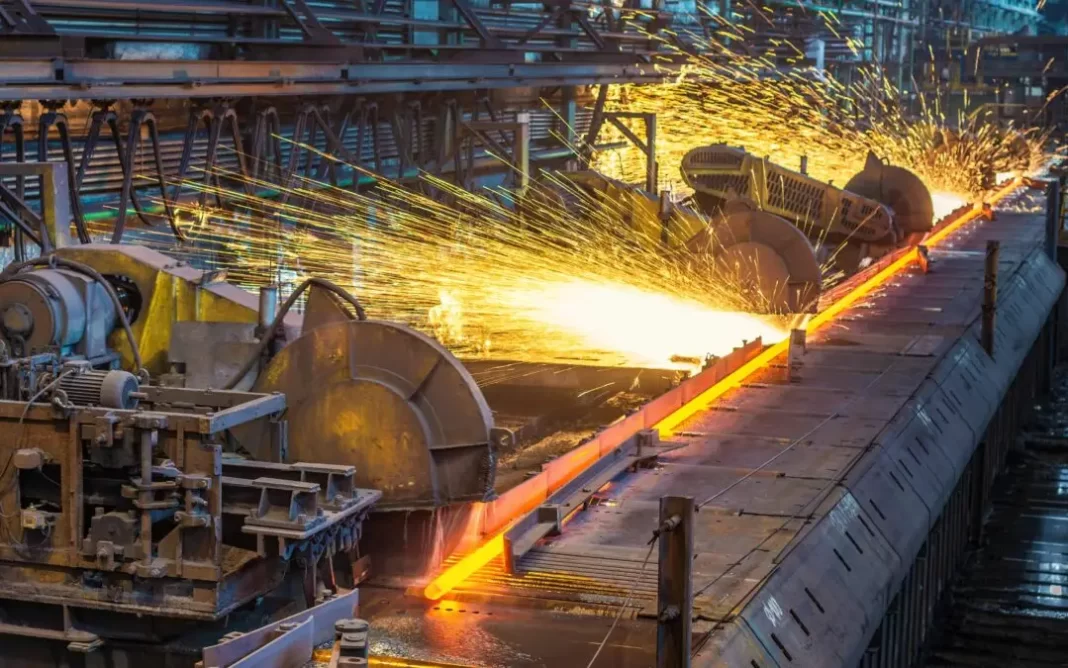A study published by the Commonwealth Secretariat has highlighted the potential for the East African Community (EAC) to establish a billion-dollar ‘green steel ecosystem’ and secure a profitable but less carbon-intensive steel industry for the region.
The report, titled ‘Towards a Green Steel Ecosystem in the East African Community’, outlines strategic issues and key requirements for developing an emergent regional industry and some recommends steps for cutting carbon emissions in the steel value chain.
The report was prepared by Chris Roberts, Tim Joseph and Paul Precht and reviewed by the Commonwealth Secretariat advisers in the Oceans and Natural Resources section, Naadira Ogeer, Economic Adviser and Dr Chilenye Nwapi, Legal Adviser.
Key findings
The EAC region, covering Burundi, the Democratic Republic of the Congo, Kenya, Rwanda, South Sudan, Tanzania, and Uganda, has seen a sharp increase in the demand for steel. Net imports of iron and steel by volume has grown by about 11.4% annually between 2010 and 2019. Kenya and Tanzania together used over 4 million tonnes of steel in 2019, while Ugandan demand pushed 1 million tonnes per year.
The report found that the region holds several comparative advantages to support a regional ‘greening’ approach These include a strong and growing regional market for steel products, an expanding transportation infrastructure, a range of private sector companies with steelmaking capability, as well as existing and planned hydro, geothermal, and other renewable electricity production.
Moreover, because the region is not tied to conventional high carbon-emitting plants, it is less complicated to decarbonise.
Economic Adviser for Natural Resources at the Commonwealth Secretariat, Naadira Ogeer, added:
“Turning the vision of a green steel ecosystem into reality ultimately requires many factors to unlock the significant investment needed including political will and an enabling policy and regulatory environment– we hope this report provides the context and recommendations to assist EAC decision-makers in the shift towards a green steel ecosystem.”
Rising demand and decarbonisation efforts
The global steel market is worth at least US$1 trillion, and the demand for the world’s most commonly used metal is only expected to increase for decades to come. With urbanisation and development expanding worldwide, steel remains essential for infrastructure, transport, energy, and technology sectors.
Steel is also integral to the energy transition, serving as a critical material for the deployment of renewable energy, such as wind turbines, solar panels and electric vehicles.
Steel manufacturing is mostly powered by coal-fired furnaces and contributes about 8% of global greenhouse gas emissions. However, companies and countries are moving towards cleaner energy sources to align with Net Zero commitments.
Legal Adviser for Natural Resources at the Commonwealth Secretariat, Dr Chilenye Nwapi, said:
“There is a real opportunity here for the East African Community to make the necessary transformations to decarbonise the steel industry, while also boosting economic development and climate action.
“A commitment to becoming a green steel ecosystem will meet national and regional economic development objectives, as well as help reach global targets captured in the United Nations’ Sustainable Development Goals (SDGs) and the Paris Agreement on Climate Change.”
Regional steel industry
The sustainable development of the minerals sector is a cornerstone of the industrialisation policy of the EAC region. However, development is mainly in the production and exportation of commodities, with little additional benefits from processing or the production of intermediate and final goods.
Since the early 2010s, the Commonwealth Secretariat has sought to support mineral value addition and the development of a regional steel industry. This new study builds on previous work by the Secretariat to assess the implications, opportunities and challenges related to mineral development in the EAC and the viability of a sustainable regional steel industry.
Also Read
Mozambique unveils Negomano-Roma Road to boost trade with Tanzania
Construction resumes on Mtentu Bridge project

